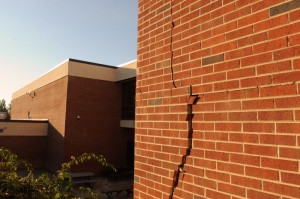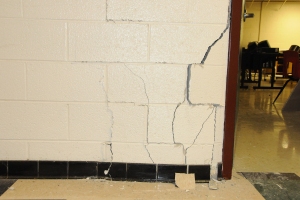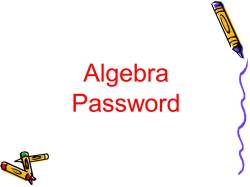New Blog
Posted: July 20, 2012 Filed under: Uncategorized Leave a commentI have decided continue blogging using Blogger. I can now be found at: http:\\www.rationalteaching.blogspot.com. Thanks!
Load up the “Inbox”
Posted: June 21, 2012 Filed under: Uncategorized Leave a comment
In my high school math classroom, the amount of paperwork that goes across my desk is amazing. I have to keep it organized. In the next few blogs, I will tell detail how I keep it straight.
First up – the INBOX. I do not let students hand me any papers, put them on my desk or leave them on my chair. When they want to give me a piece of paper, I ask them to place it in the Inbox that looks just like the picture above.
If the students put the papers in the Inbox, I won’t lose it because there will be a pile of papers there. It is much harder to lose a pile of papers than one piece of paper. Sometimes the kids get annoyed that they have to walk all the way across the room, but I always tell them, “If you took the effort to complete that work, I want to make sure you get credit for it and if it goes into the Inbox, I will check it.”
Calculators – What are your thoughts?
Posted: June 13, 2012 Filed under: Uncategorized Leave a commentI was recently reading an article about calculator use in school. I have found myself going back and forth on the issue in the past. I teach high school math and I have seen both the good and bad sides of using calculators. What are your thoughts?
Here is a little of the article I was reading on Education World:
“Depending on one’s perspective, the use of calculators at the elementary school level is seen as either the solution to or the cause of many of the problems affecting math education in this country. What’s the truth? Even the experts disagree.
IN THIS CORNER: THE CALCULATOR CHAMPIONS
Calculator proponents claim that calculators
- allow students to spend less time on tedious calculations and more time on understanding and solving problems.
- help students develop better number sense.
- allow students to study mathematical concepts they could not attempt if they had to perform the related calculations themselves.
- allow students who would normally be turned off to math because of frustration or boredom to increase their mathematical understanding.
- simplify tasks, while helping students determine the best methods for solving problems.
- make students more confident about their math abilities.
AND IN THIS CORNER: THE CALCULATOR CRITICS
Critics say calculators
- produce students who can’t perform basic tasks without a calculator.
- encourage students to randomly try a variety of mathematical computations without any real understanding of which is appropriate or why.
- prevent students from discovering and understanding underlying mathematical concepts.
- keep students from benefiting from one of the most important reasons for learning math — to train and discipline the mind and to promote logical reasoning.
- inhibit students from seeing the inherent structure in mathematical relationships.
- give students a false sense of confidence about their math ability.”
Here is a link to the article if you are interested in reading more.
“Sum”thing to write about
Posted: June 11, 2012 Filed under: Uncategorized Leave a commentDon’t you wish you had an easy way for students to quickly check their own answers instead of having to ask you? I love this activity because it is so versatile and can adapted to almost any math (and some science) topic. It is called “Add It Up.”
The “Add It Up” sheet can be used for any math or science topic that has numeric answers. Students do up to 16 questions prepared by the teacher and fill in the appropriate boxes on the sheet. Once they are done, the students add up their answers and if the sum is the same as the sum given by the teacher before or after the activity, then the student has the correct answers.
Enjoy!
My Favorite Review Game
Posted: June 4, 2012 Filed under: Uncategorized Leave a commentI love this review game! The beauty of it is that you can use it for any grade and any subject. It is called BUMP. Here is how it works:
Line students up along a wall in your room. Give the students a question. The question could come verbally or you can present it through a document camera or Powerpoint. When a student knows the answer, they raise their hand. Call on the student. If they get the question right, they may “bump” the person on their left or the person on their right (students on each end of the line can bump the person on the other end, as if they were in a circle). That “bumped” student then goes back to their seat. If the student you called upon gets the question wrong, then they go back to their seat. The game progresses that way until one person is standing.
One variation I have played with in the past involves letting the “bumped” students try to get back in the game. To keep them involved, I allow them to answer a question that the standing students cannot. If they can get the question right, I let them back in the game.
Enjoy!
End of Year Algebra 2 Review Packet
Posted: June 4, 2012 Filed under: Uncategorized Leave a commentI know how tough it is to review with students at the end of a math course. We play games, hit on topics that the students may have struggled with during the year, and done review activities. I like to do those things, but I also like to have the students go back through each topic of the course and identify for themselves where they need help.
So, I created a packet of over 190 questions broken up into the different topics we covered in class. I included notes and example problems within each section before the students work the problems.
It has been very helpful for students to complete this exercise. The best thing is that students have a complete study guide when they are finished with the packet that they can use to ready themselves for their state test or final exam.
A Different Kind of Giveaway
Posted: May 22, 2012 Filed under: Uncategorized Leave a commentWith all of the rubble surrounding us in our rural Virginia county, we are rebuilding. We have rallied around our schools and much good has come out of such destruction.
This weekend, Alan Jackson gave a free benefit concert to help raise money for our schools. Approximately 6,000 people showed up to the concert held in a town of only 500 total residents. Needless to say, it was a big deal. A total of $152,000 was raised, which will go straight to rebuilding the schools we lost during the 5.8-magnitude August 23, 2011 earthquake.
So, instead of a gift certificate giveaway, I wanted to do something a little different. I will donate $1 to our schools for every 5 people I get to follow my store between now and June 1. I have a lofty goal of reaching 50 followers. $10 is not a huge amount of money, but it is supplies for a teacher or student or field trip money for a student who needs it. It is not a lot of money, but every little bit helps.
Thanks for your support of our schools.
Chick here to link to my store.
Chad
Hello World
Posted: May 21, 2012 Filed under: Uncategorized Leave a commentWelcome to my little space on the internet. I am happy to finally have a blog and be able to share a little bit of my classroom with you!
The year is winding down and we are moving forward to finish the school year on a very positive note. So, with that in mind, I would like to share an activity that my kids love! It is patterned after the old game show Password. It is really to easy to make these activities. I usually have several available because after we play this once in class, the kids want more!
To play, set two chairs up facing the class (the “audience”). Two “contestants” sit in the chairs so they cannot see the word projected on the screen. The audience then raises their hands to splly the contestants with one-word clues describing the secret word. Each contestant gets one guess at the secret word for each clue. If the contestants don’t get the secret word from the first clue, call on another audience member to give another clue. This progresses until a contestant guesses the secret word from a clue. The audience member who supplied the winning clue gets to take the losing contestant’s spot in front of the room. Each correct secret word gets the contestant one point. Whoever ends up with the most points at the end wins.
Some students tend to excel at this game and the audience members want to beat them. A fierce competition tends to develop. The fun part is that everybody except the contestants knows the secret word and the audience can’t believe that the contestants can’t guess it.
Follow this link to download the activity:
http://www.teacherspayteachers.com/Product/End-of-Year-Algebra-Review-Game-Password
Follow this link to see other items available in my store:
http://www.teacherspayteachers.com/Store/The-Engineer



